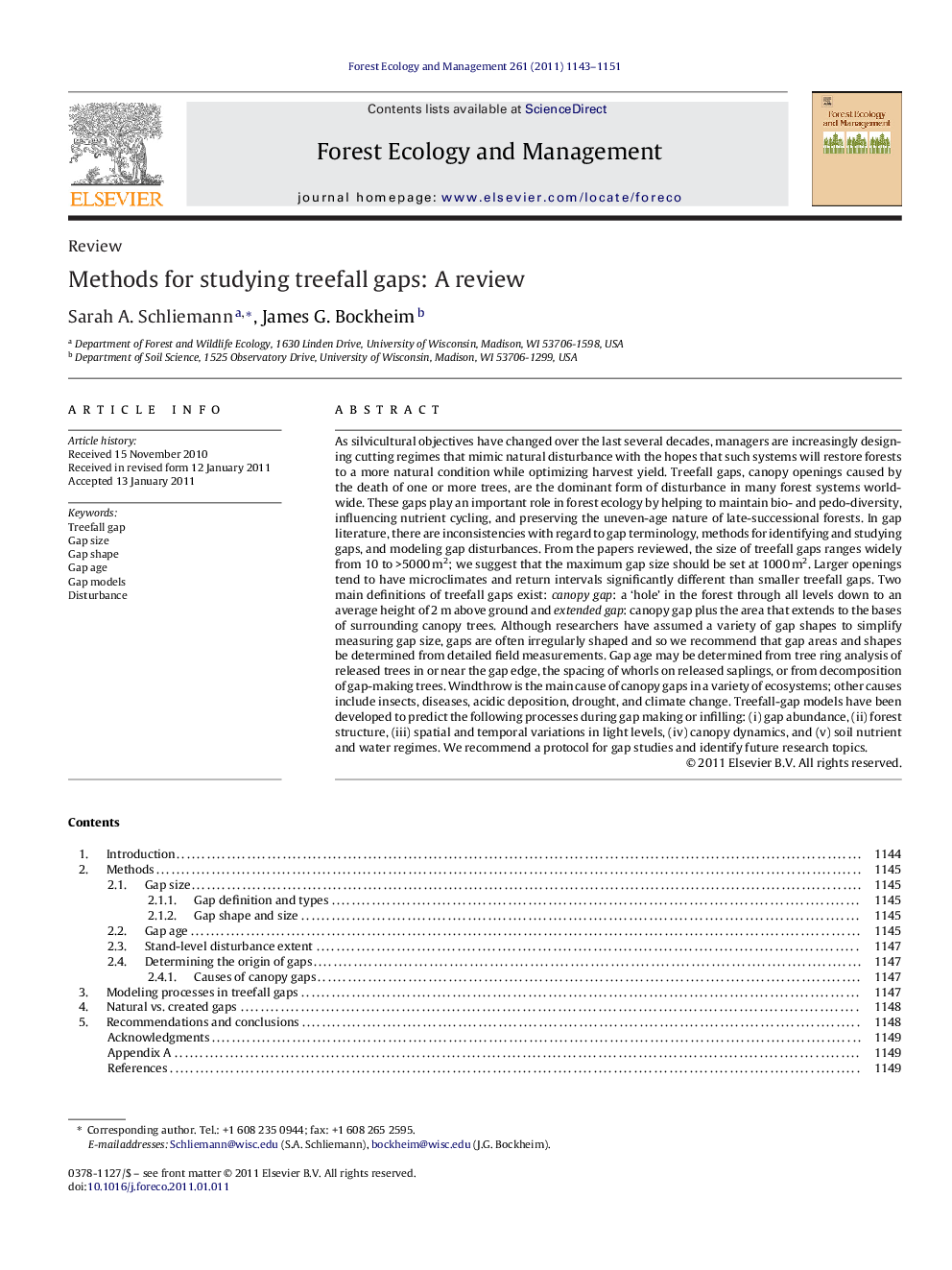| Article ID | Journal | Published Year | Pages | File Type |
|---|---|---|---|---|
| 87726 | Forest Ecology and Management | 2011 | 9 Pages |
As silvicultural objectives have changed over the last several decades, managers are increasingly designing cutting regimes that mimic natural disturbance with the hopes that such systems will restore forests to a more natural condition while optimizing harvest yield. Treefall gaps, canopy openings caused by the death of one or more trees, are the dominant form of disturbance in many forest systems worldwide. These gaps play an important role in forest ecology by helping to maintain bio- and pedo-diversity, influencing nutrient cycling, and preserving the uneven-age nature of late-successional forests. In gap literature, there are inconsistencies with regard to gap terminology, methods for identifying and studying gaps, and modeling gap disturbances. From the papers reviewed, the size of treefall gaps ranges widely from 10 to >5000 m2; we suggest that the maximum gap size should be set at 1000 m2. Larger openings tend to have microclimates and return intervals significantly different than smaller treefall gaps. Two main definitions of treefall gaps exist: canopy gap: a ‘hole’ in the forest through all levels down to an average height of 2 m above ground and extended gap: canopy gap plus the area that extends to the bases of surrounding canopy trees. Although researchers have assumed a variety of gap shapes to simplify measuring gap size, gaps are often irregularly shaped and so we recommend that gap areas and shapes be determined from detailed field measurements. Gap age may be determined from tree ring analysis of released trees in or near the gap edge, the spacing of whorls on released saplings, or from decomposition of gap-making trees. Windthrow is the main cause of canopy gaps in a variety of ecosystems; other causes include insects, diseases, acidic deposition, drought, and climate change. Treefall-gap models have been developed to predict the following processes during gap making or infilling: (i) gap abundance, (ii) forest structure, (iii) spatial and temporal variations in light levels, (iv) canopy dynamics, and (v) soil nutrient and water regimes. We recommend a protocol for gap studies and identify future research topics.
Research highlights► Managers are looking to natural disturbance regimes to model harvest guidelines. ► We review field methods for sampling gaps and common gap models. ► We discuss the attributes of natural and man-made gaps. ► We make recommendations for future gap research.
